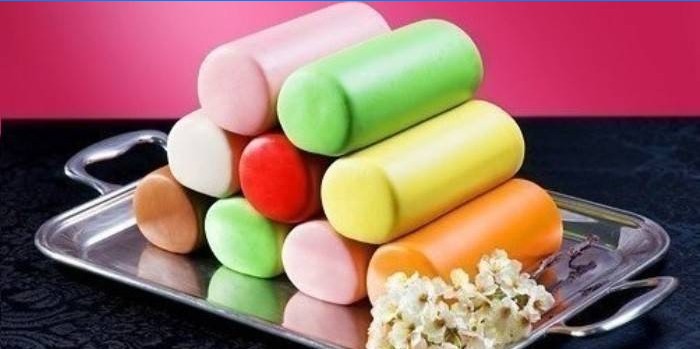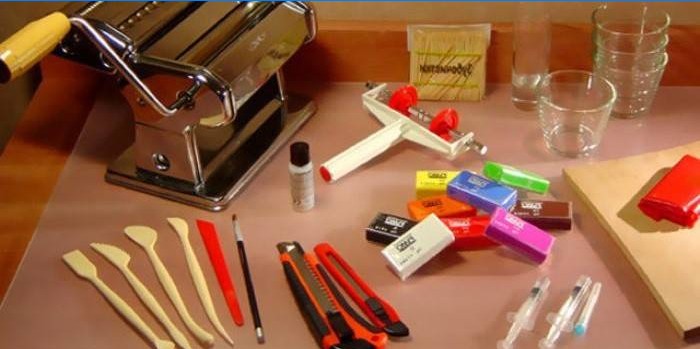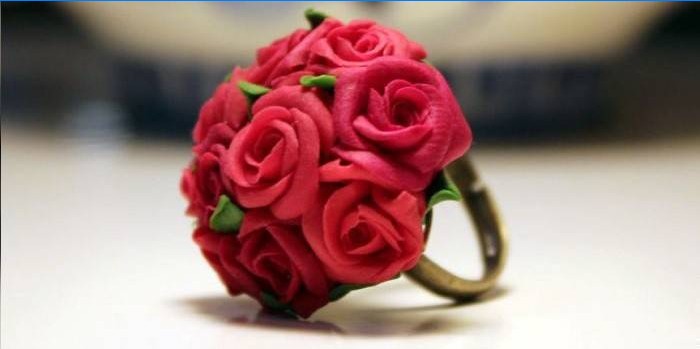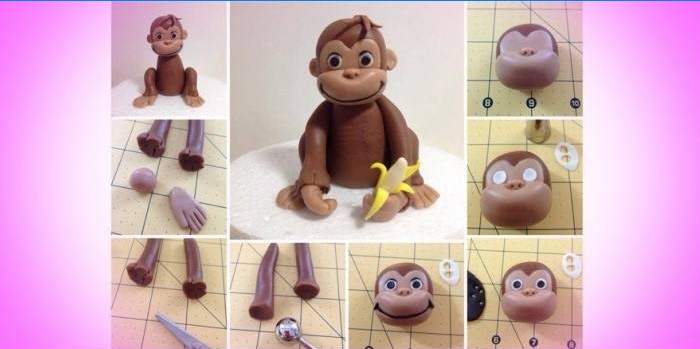The content of the article
- What is polymer clay
- Structure
- Views
- How to sculpt polymer clay
- What can be made of polymer clay
- Flowers
- Jewelry
- New Year crafts
- Animals
Clay sculpting is a great choice as a hobby. Crafts made of polymer clay are suitable even for beginners; it’s worth watching master classes or lessons, after a short time you will be able to please relatives with their own hand-made products. Modeling will help to develop fine motor skills in children and their creative thinking, and for adults is a great way to forget about everyday troubles and household things..
What is polymer clay
What is polymer clay made of? This is a plastic material that can be easily molded, which hardens in air or during heat treatment at 100-130 ° C at home. It is used to create various souvenir products, for example: jewelry, dolls, sculptures, decorative products for home design. Clay crafts can be used as a good handmade gift.

Structure
Polymer clay consists of polyvinyl chloride (PVC) and a plasticizer, which helps the substance to be elastic. The larger the plasticizer, the softer the finished material becomes. The composition of clay may include pigments, kaolin, mica (gives a metallic or pearlescent effect). When PVC is combined with a plasticizer, diffusion occurs, resulting in gelation. This type of plastic is divided into: liquid (gel), ordinary (in the form of bars), translucent and a base with fillers.
Views
Clay by the method of hardening is self-hardening, without firing and baked. Self-hardening – this means that it hardens within a few hours (or days), dries naturally in the air. It is stored in sealed packaging. Baked – the hardening process occurs at high temperatures. Clay modeling without firing involves boiling water treatment.
Depending on their composition and other properties, self-hardening clays are divided into heavy and light. Heavy clay resembles ordinary clay in its initial structure and in finished form. The hard surface of a heavy clay product can be easily processed. Light type of clay – the mass to the touch resembles marshmallows. It is often recommended for beginners to use this type of needlework. Crafts from self-hardening clay of a light appearance are dull, fragile, resemble paper. She is often used in working with color compositions, creating unobtrusive, sophisticated bouquets..
Especially for creating flowers, there is a certain type of clay – cold porcelain, with which you can create realistic creations. In the photo, such figures are very difficult to distinguish from real porcelain figurines. Thermoplastic must be baked at temperatures from 100 ° C. The cooking time of baked clay varies depending on the size of the craft: the larger, the longer. Note that a microwave is not an option for heat treatment. The strength of the thermal material increases if the room is cool. Open packaging should be wrapped in a bag..
How to sculpt polymer clay
Where to start:
- Buy, in your opinion, compatible colors that can be useful in the palette.
- Purchase a separate knife for working with clay. Work with a kitchen knife is contraindicated.
- Make sure that there is a rolling pin or a metal roller in the workplace. Toothpicks, stacks, molds to choose from, napkins, gloves.
- Get a varnish with which you will cover products.
- Mash hard material in your hands, over time it will become ready for work.

What can be made of polymer clay
As a result of the flexibility and flexibility of the material, modeling from polymer clay can give many different products and turns into art. With its help create colorful exotic bouquets, sophisticated dolls, mouth-watering realistic fruits and desserts, jewelry, animals, decorative elements for the home. An adult or a child with unlimited imagination will be able to create a unique fake that can be presented as a gift to loved ones.
Flowers
Flower bouquets are one of the frequent crafts made from polymer plasticine. How are roses made using plastic material? This requires:
- Roll a drop-shaped ball that will serve as the core of the flower.
- Roll a few more balls, giving them a flattened shape. They will serve as petals.
- Wrap a ball of petals, creating a rosebud. Bend those petals that are outside to make the flower magnificent. The ones inside are left more direct.
Jewelry
Using clay, you can create a unique bracelet, brooch, beads, earrings. To make a ring with a bud, take:
- basis for a ring with a loop;
- a metal cell for a bud with a hole of 2 mm;
- clay flower (for example, a previously prepared rose);
- polymer plastic;
- foil;
- liquid plastic;
- toothpicks.

Place the bud cage on the base for the loop ring. Using a toothpick, place the liquid plastic in the middle hole of the cell. Next, using plastic, create a 1.5 mm thick plate and place it on the bottom, pressing down well. Fix the ring vertically on the foil, pour in a drop of liquid plastic, putting on top of the finished flower. After that, place the product in the oven for 30 minutes. Having taken out, degrease, dip the petals in varnish.
New Year crafts
Mandarin ducks – that’s the first thing that comes to mind when mentioning the New Year holidays. To create them we need:
- needle;
- Toothpicks
- object for rolling clay;
- white acrylic paint, brush;
- blade / stationery knife;
- sandpaper, gloves;
- liquid plastic;
- small salt;
- varnish.
First of all, we form an orange sausage, cut into equal pieces. We give these pieces the form of mandarin slices, connect them together. Work preferably with gloves to avoid fingerprints on creation. Use pins to add realism to the slices. After this follows the first stage of firing, which lasts no more than 5 minutes. Color the tangerines with white paint, after – remove it from the slices with sandpaper, leaving them in “veins”. Tangerine is ready.
Animals
To get started, choose simple figures, where the sculpting is depicted schematically, gradually improving your own technique. To create a monkey, we need:
- stationery knife;
- Stacks
- object for rolling clay;
- toothpicks, wet wipes;
- varnish, glue;
- brush.

Take the brown ball as the base of the head and flatten it. Next, make a hemisphere of lighter shades. Blind eyes from small black balls, cut the nose and mouth of the monkey. Next, attach the ears, 2 small balls on the sides. Roll out another ball, giving it a drop-shaped form – this will be the body. Roll the ball smaller in beige color – this will be the light fur of the monkey on the stomach. Use a toothpick to make a wool texture. Attach the tail and legs in the form of thin sausages.

What are the skills or techniques that will be taught in the polymer clay modeling workshop?
What are some essential techniques and tools that beginners should know and have for a polymer clay modeling workshop?
What are some key tips and techniques that will be covered in the polymer clay modeling workshop? Is the workshop suitable for beginners or is prior experience with clay modeling required? Are there any materials or tools that participants need to bring along?